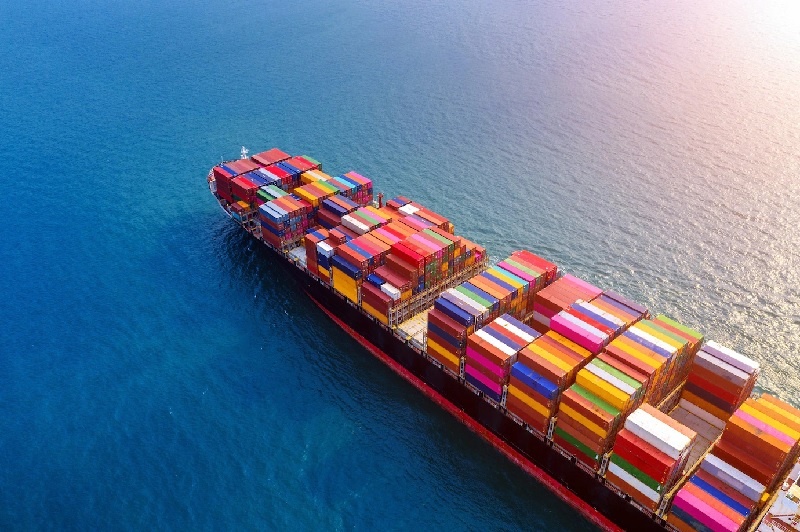Shipping upgrades targeted for 2030
 |
| Shipping upgrades targeted for 2030-illustration photo, freepik.com |
The Vietnam Maritime Administration (VMA) has asked the Ministry of Transport (MoT) to implement procedures to approve the development of Vietnam’s international shipping fleet over the next few years. Currently, Vietnamese ships transport freight within the country’s waters only, without a strong capacity for international routes.
The VMA has proposed policies to develop Vietnam’s international shipping fleet and increase its market share in the next five years, involving combined incentives related to VAT, import tax, personal income tax (PIT), and concessional loans.
To reduce the financial burden for shipping owners, it is necessary to remove the application of 10 per cent VAT according to current regulations for imported freight ships until the end of 2026, the VMA suggested in a document sent to the MoT. Its figures show that VAT on imported ships was VND234 billion ($10.1 million) in 2020 and VND109 billion ($4.74 million) in 2021.
Ship owners are expected to be exempt from the import tax and see a decrease in tonnage fee by 50 per cent when they operate container ships of 1,500TEUs or more, or own ships using cleaner fuel such as liquefied natural gas.
“There is a tax exemption policy for Vietnamese shippers to sign long-term transport contracts for large quantities with Vietnamese ship owners. The bank should apply preferential lending rates for investment in purchasing and building new container ships, and ships using clean fuel,” the VMA proposed.
The administration has asked the State Bank of Vietnam to allow Vietnamese ship owners that are operating on international routes to borrow foreign currency to purchase new ships. Besides this, a 50 per cent reduction of PIT for Vietnamese crew members on cargo ships on domestic routes and seniority of five years would be suitable.
The VMA’s proposal targets that by 2030, Vietnamese container carriers have the capacity to reach international markets such as Japan, South Korea, and India, and then target possibly Europe or North America in a longer-term strategy.
Vu Anh Tuan, director of Project Shipping Transport Co., Ltd., said, “Most shipping carriers have a small scale and lack capital and human resources as well as international experience. Besides this, there is a lack of links in the supply chain between logistics service providers and other businesses.”
Offering incentive policies to develop an international fleet is an urgent requirement as foreign container carriers are dominating the market, according to Tuan.
The VMA’s statistics show that about 90 per cent of Vietnam’s trade volume is transported by sea, reaching 24 million, up 7 per cent in 2021. However, the country’s current fleet has only a 7 per cent market share, as the rest is handled by foreign shipping lines.
While Vietnam’s container shipping companies have a total capacity of 39,500TEU, 13 of the vessels are over 25 years old and 15 of the vessels have a capacity of 300-600TEU suited only for domestic operations. Only 14 of the ships have a capacity of 1,000-1,800TEU and can run routes in Asia.
“The expenditures to modernise the shipping system are high, thus domestic carriers need incentive loans. For example, we would like to receive loans worth at least 50 per cent of a ship’s value. Also, we expect mortgage assets formed from these loans through the commercial banking system,” Tuan continued.
The MoT will continue to gather suggestions and opinions from businesses and associations to improve Vietnam’s international shipping fleet.
What the stars mean:
★ Poor ★ ★ Promising ★★★ Good ★★★★ Very good ★★★★★ Exceptional
Related Contents
Latest News
More News
- Businesses ramp up production as year-end orders surge (December 30, 2025 | 10:05)
- Vietjet chairwoman awarded Labour Hero title (December 29, 2025 | 13:06)
- How to unlock ESG value through green innovation (December 29, 2025 | 10:03)
- AI reshapes media and advertising industry (December 29, 2025 | 08:33)
- FPT and GELEX sign deal to develop blockchain tech for global markets (December 29, 2025 | 08:29)
- Vietnam’s GDP forecast to grow by 9 per cent in 2026 (December 29, 2025 | 08:29)
- Women entrepreneurs are key to Vietnam’s economic growth (December 29, 2025 | 08:00)
- Vietnam's top 500 value-creating enterprises announced (December 27, 2025 | 08:00)
- The PAN Group shaping a better future with ESG strategy (December 26, 2025 | 09:00)
- Masan Consumer officially lists on HSX, marking the next phase of value creation (December 25, 2025 | 13:20)

 Tag:
Tag:





















 Mobile Version
Mobile Version